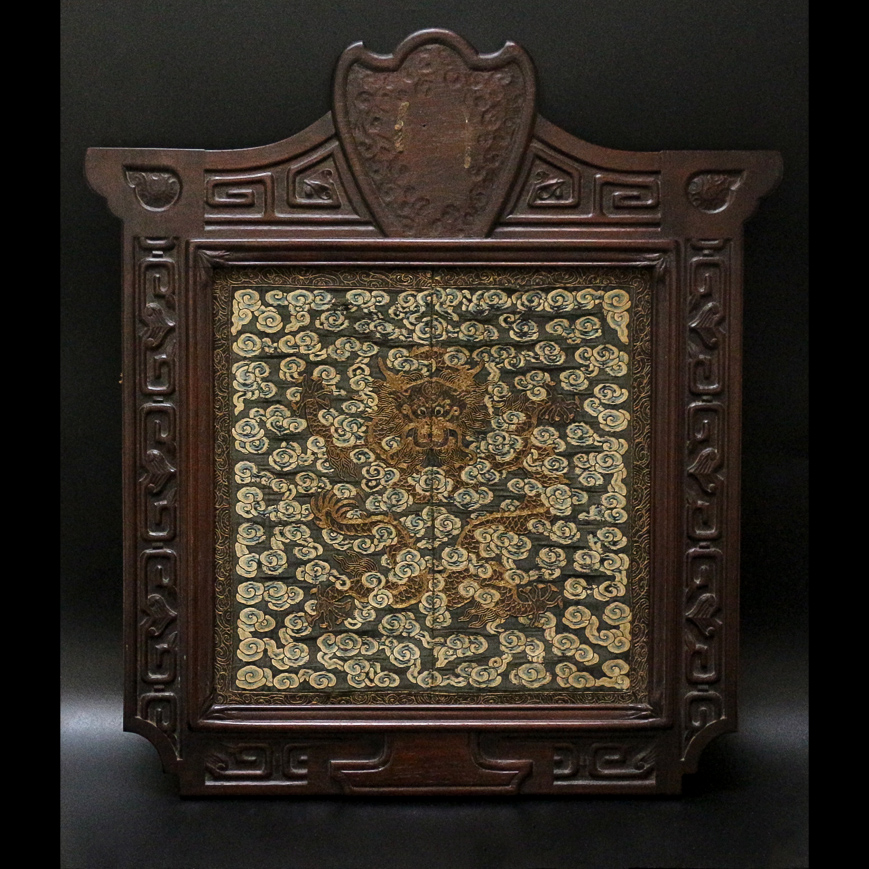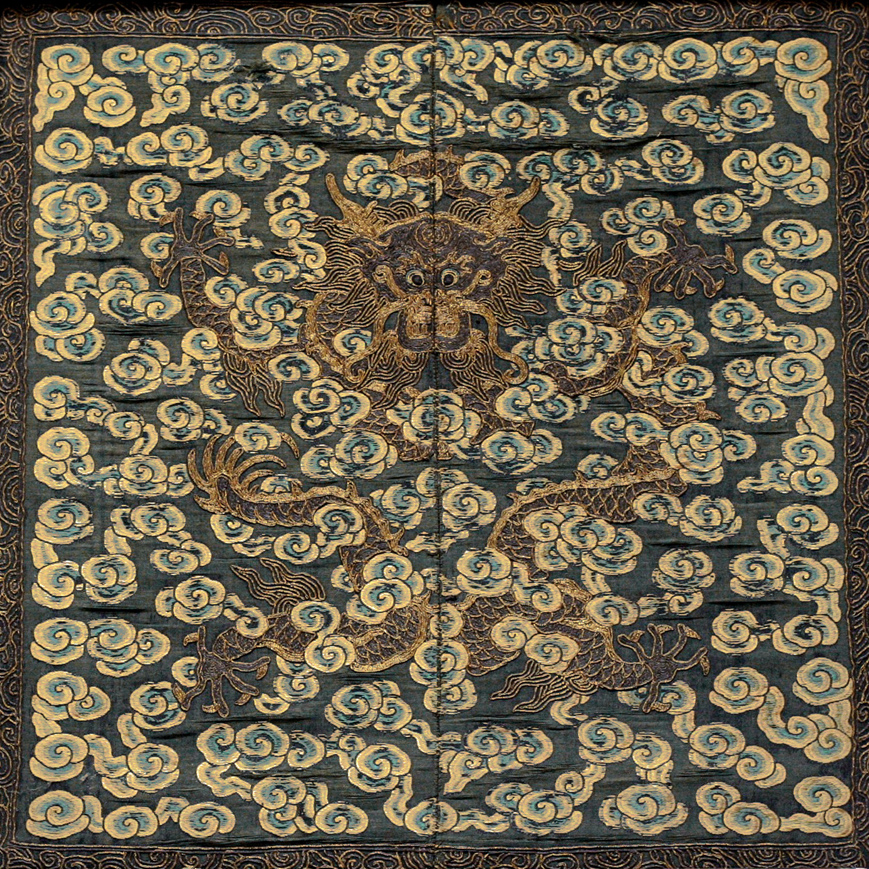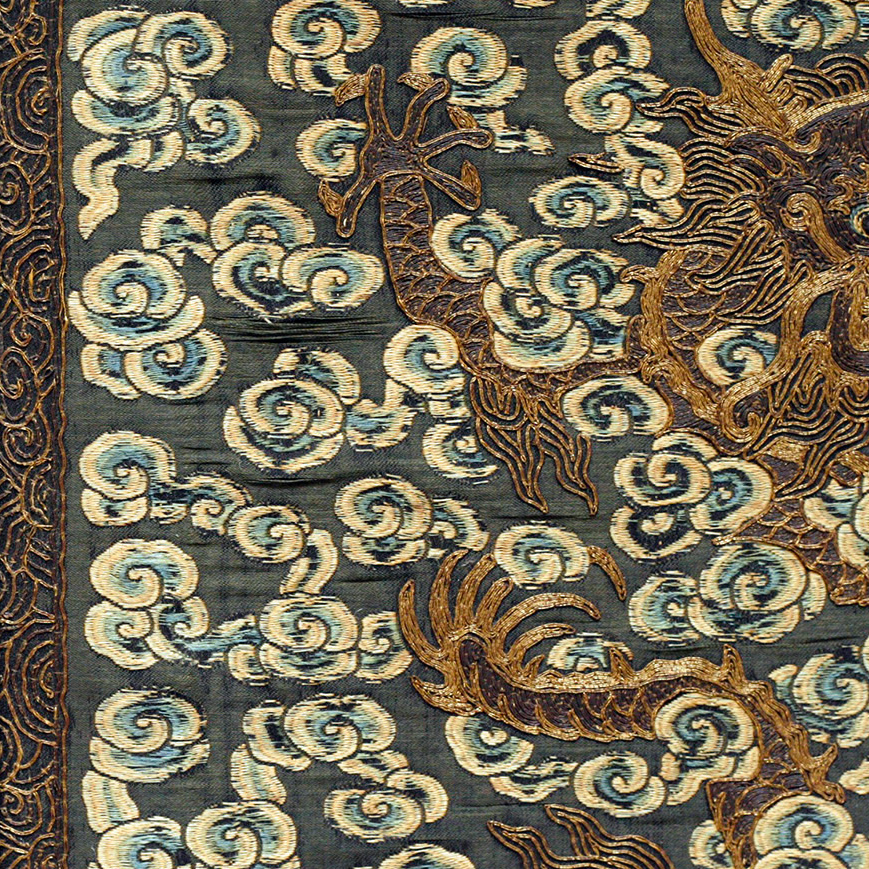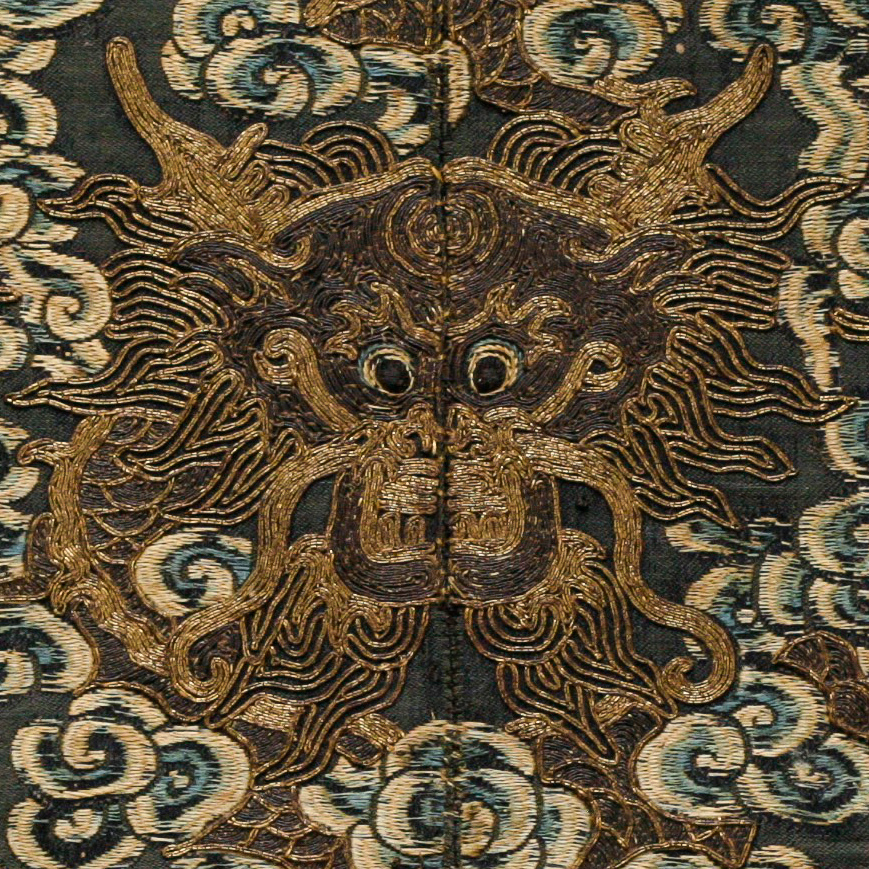- /images/Pieces-Objets/Livres/Buzi-dragon1/buzi-dragon1.jpg

- /images/Pieces-Objets/Livres/Buzi-dragon1/buzi-dragon2.jpg

- /images/Pieces-Objets/Livres/Buzi-dragon1/buzi-dragon3.jpg

- /images/Pieces-Objets/Livres/Buzi-dragon1/buzi-dragon4.jpg





260135 ~
rare insigne impérial de prince
dynastie qing xviii-xixe siècle
Insigne de rang (buzi) en kesi à décors de dragons à cinq griffes de face, évoluant dans le ciel parmi les nuages, en soie tissés de tons mélangé et fils d’or sur un fond ver fonçé. Monté postérieurement sur un panneau de bois sculpté.
Souvent appelé carré de mandarin, le buzi est un insigne de rang portés par les officiels de la court pour signifier leur statut civil ou militaire. Ces carrés sont au nombre de deux; l’un est attaché au devant du costume, l’autre au dos.
Ils ont été introduits pour la première fois durant la dynastie Ming en 1391. Les buzi représentant un dragon sont rares car seul un prince de sang avait le droit de porter le dragon impérial à cinq griffes (et l’empereur lui-même bien entendu)
Dimension badge: 26,5 x 26,5 cm / Bois : 42 x 46,5 cm
~
a rare imperial duke’s insignia
qing dynasty 18-19th century
Rank insignia (buzi) in kesi decorating with a front-facing five-clawded dragon flying in the sky amidst the clouds, embroidered with silk of muted tones and couched gold threads, on a deep green ground. Mounted on a carved wood panel.
Called mandarin square, the buzi is an insignia worn by court officals to signify their status in the civil or military sphere. Two badges were attached to the costume, one in the front which was split to allow the garment to be buttoned, the other on the back. The badges were first introduced during the Ming period in 1391. Buzi with dragon are rare because only a Prince of the Blood who had been granted the right to wear the five-clawed creature by the emperor can worn it. (and of course the emperor).